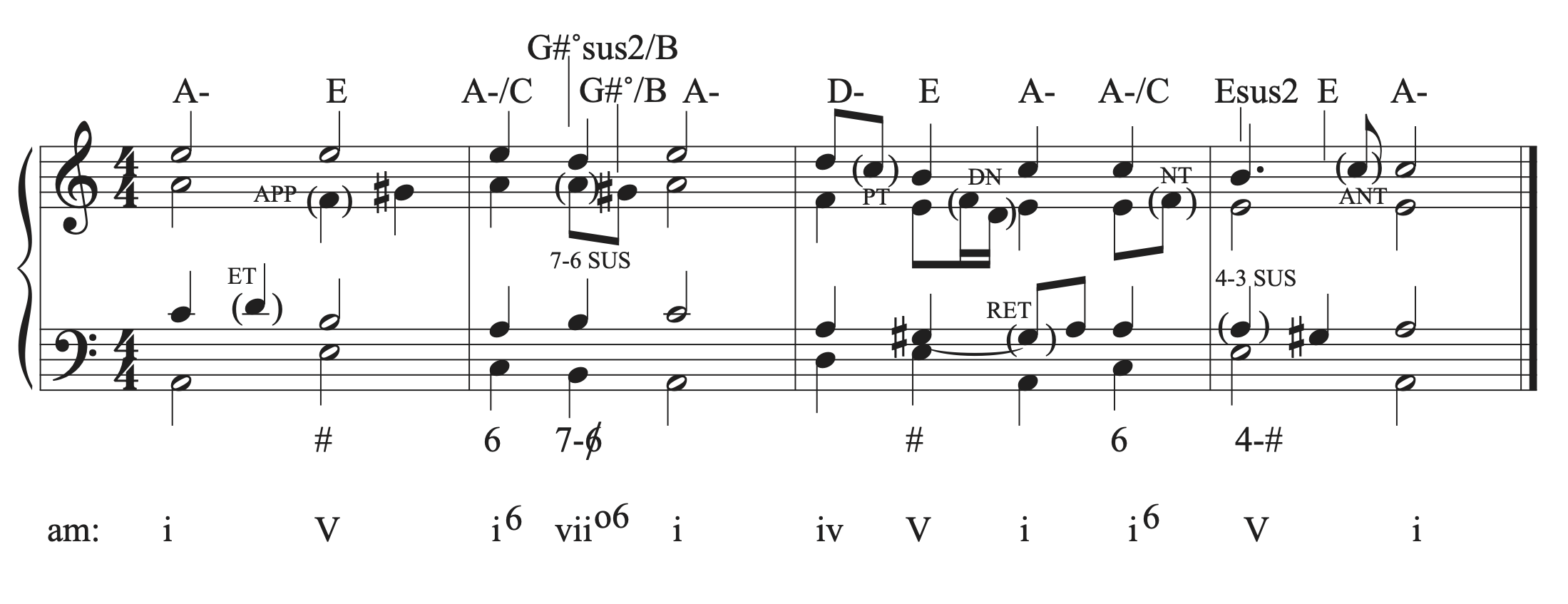10.6 Part Writing, Non-Chord Tones: Theory exercises
In addition to Workbook Chapters 10.6.1 and 10.6.2, see the example below.
In the example below, we will add suspensions, a double neighbor, a neighbor tone, a passing tone, a retardation, an appoggiatura, an escape tone, and an anticipation.
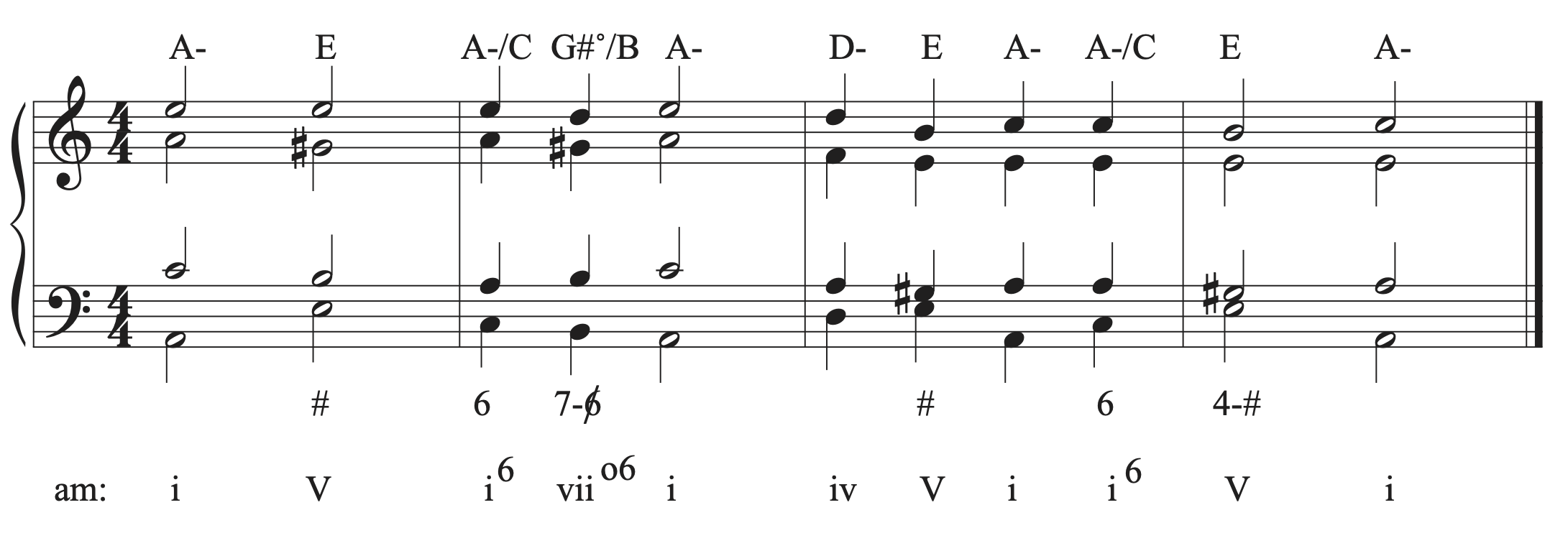
We can tell from the figured bass where the 7-6 and 4-3 suspensions should be added. To add the 7-6 suspension to beat 2 of bar 2, we need to figure out which voice should have the suspension. When inserting suspensions from figured bass, it’s important to know that 9-8 and 4-3 suspensions occur over root position chords, and 7-6 and 2-3 suspension occur over first inversion chords. Therefore, in the 7-6 suspension we know the B in the bass is the 3rd of a chord in first inversion. The voice that forms a 7-6 interval between the bass and the suspension and the bass and the resolution is the alto voice. The A in the alto is suspended and resolves to the G# on the second half of beat 2. We know that G has been raised to G# because of the slash marking on the 6 in the figured bass symbol. That raises the leading tone in the vii˚6 chord. Make sure to label the suspension.
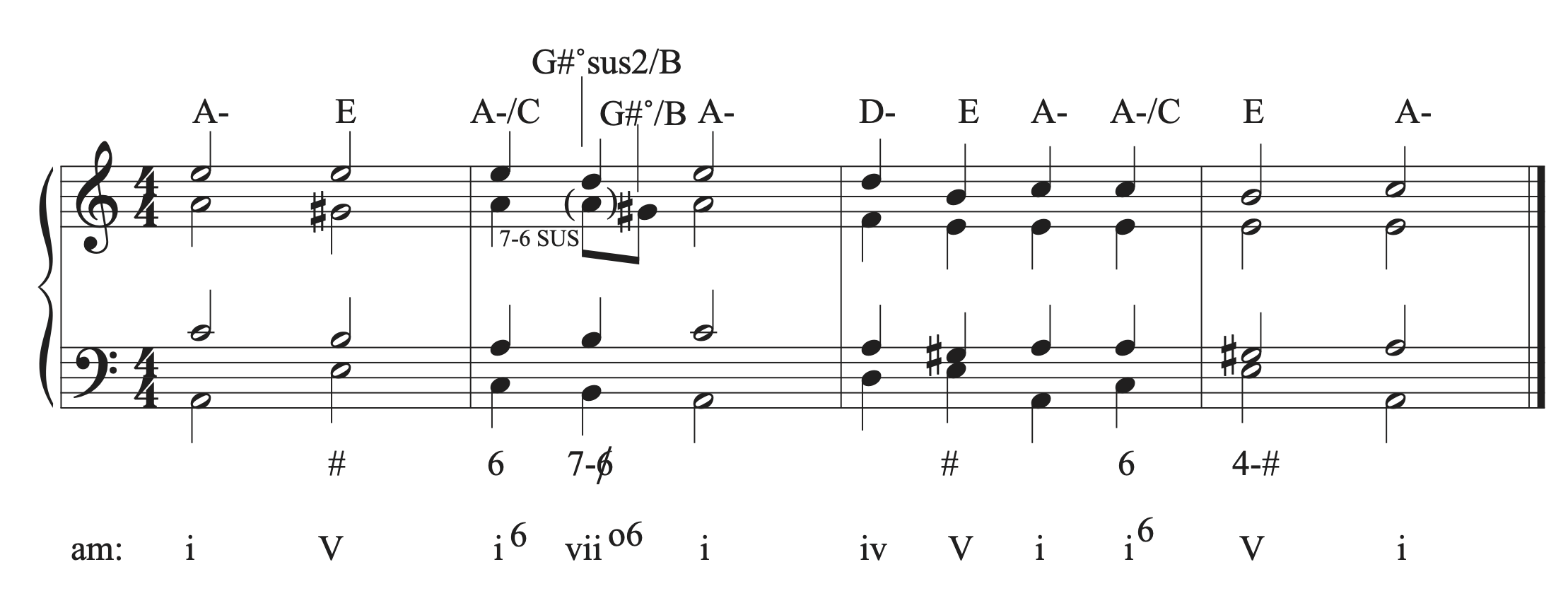
Next, we can add the 4-3 suspension on beat 1 of bar 4. The tenor voice must have the suspension in order to create the needed 4-3 intervals above the bass. Make sure label the suspension.
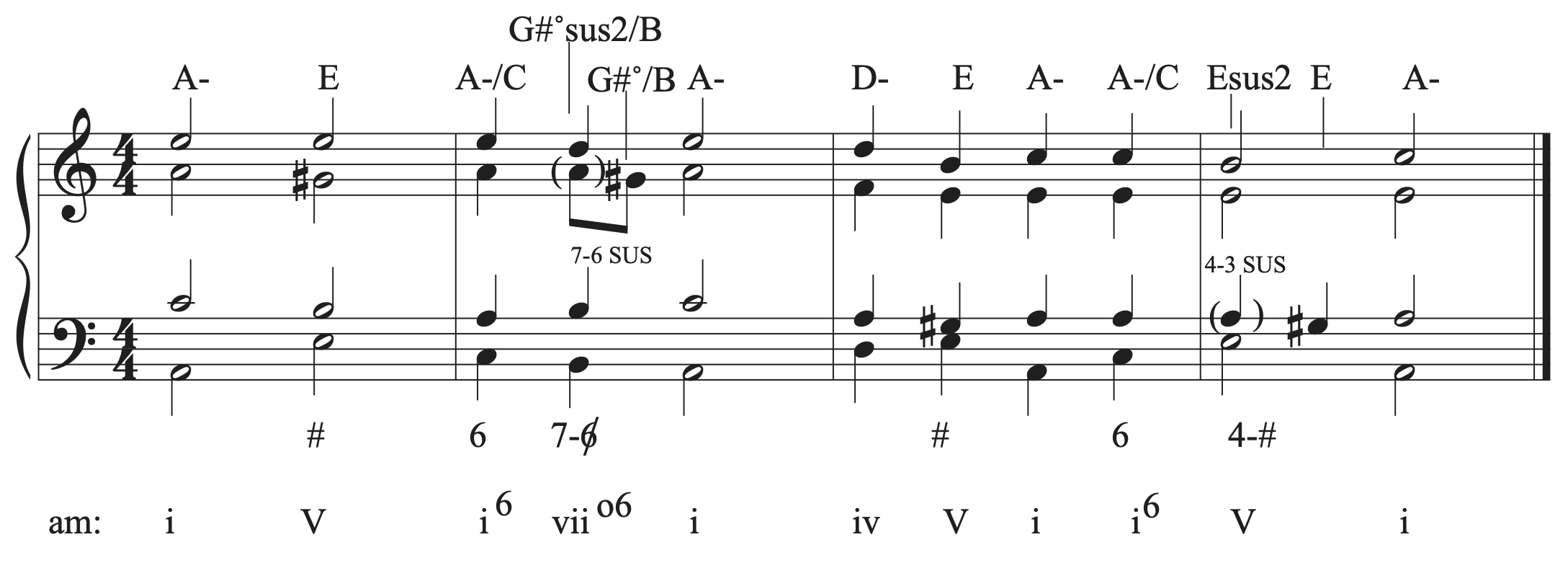
When determining which NCTs to add to a progression, it is helpful to add the ones that have the strictest type of motion first so that you don’t run out of places where more specific NCTs can be inserted. Let’s look for places to insert double neighbor and neighbor tones. Bar 3, beat 2 and beat 4 use common tones, and are a good place to put a double neighbor or neighbor tone. Let’s add a double neighbor to the alto in beat 2, and a neighbor tone to the alto on beat 4. Make sure to label both NCTs. Also make sure that adding the NCT did not create part writing errors. Check for errors between chords.
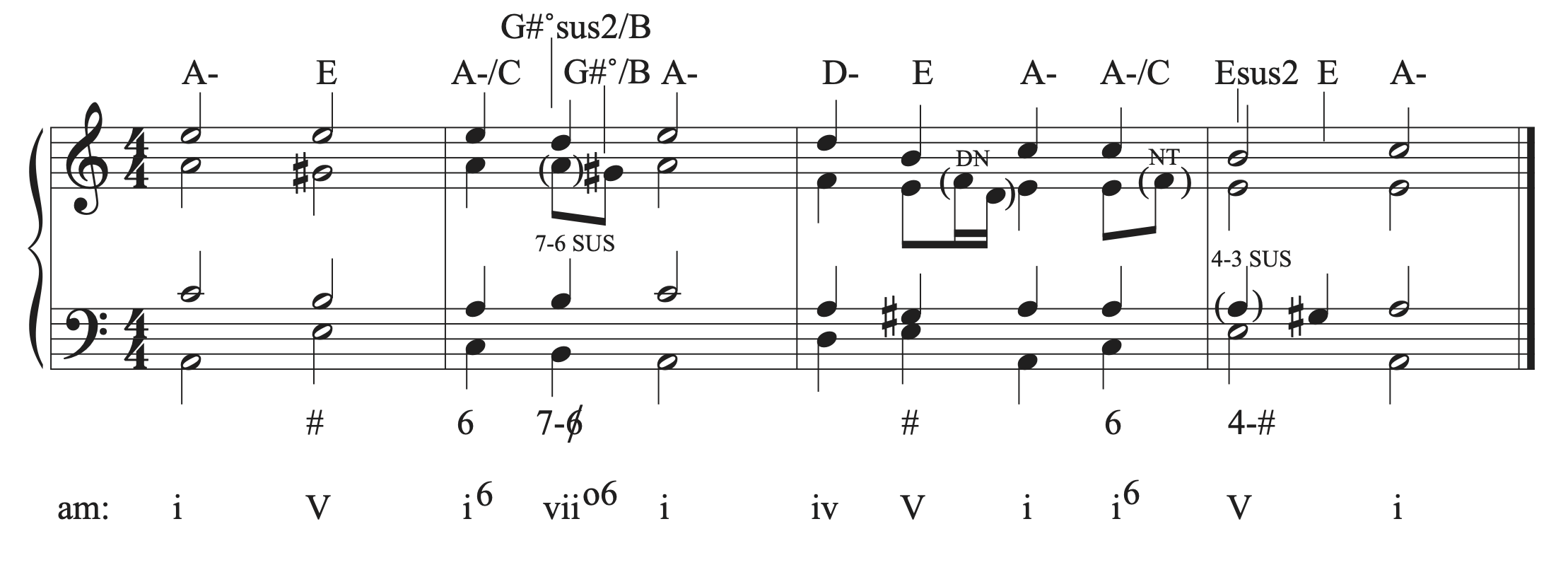
Let’s look for a place to insert a passing tone next. We need motion in once voice that uses notes at least a major 2nd apart. We can insert a passing tone into the soprano voice in bar 3, beat 1. Label the NCT and check for errors.
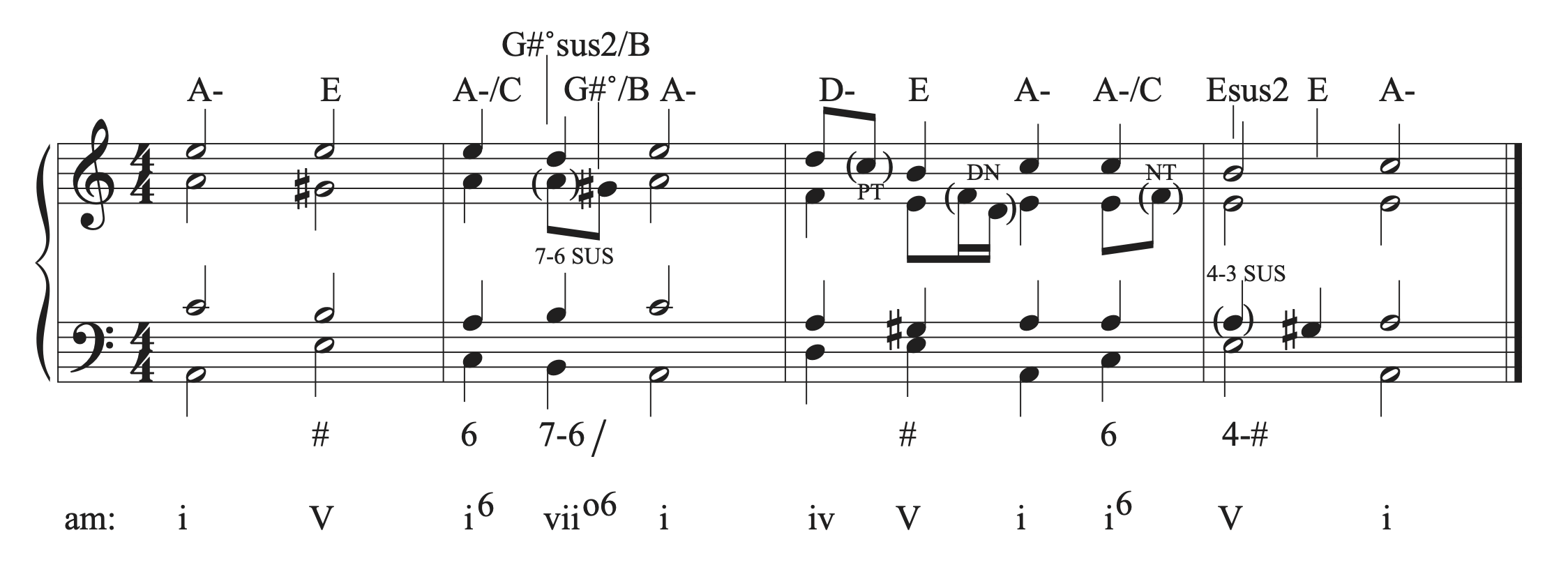
Next, let’s insert a retardation. A retardation is like a suspension, but instead of resolving up, it resolves down to the next chord tone. So, we are looking for ascending stepwise motion in a voice. A retardation can be inserted into the tenor voice in bar 3, beat 3. Label the NCT and check for errors.
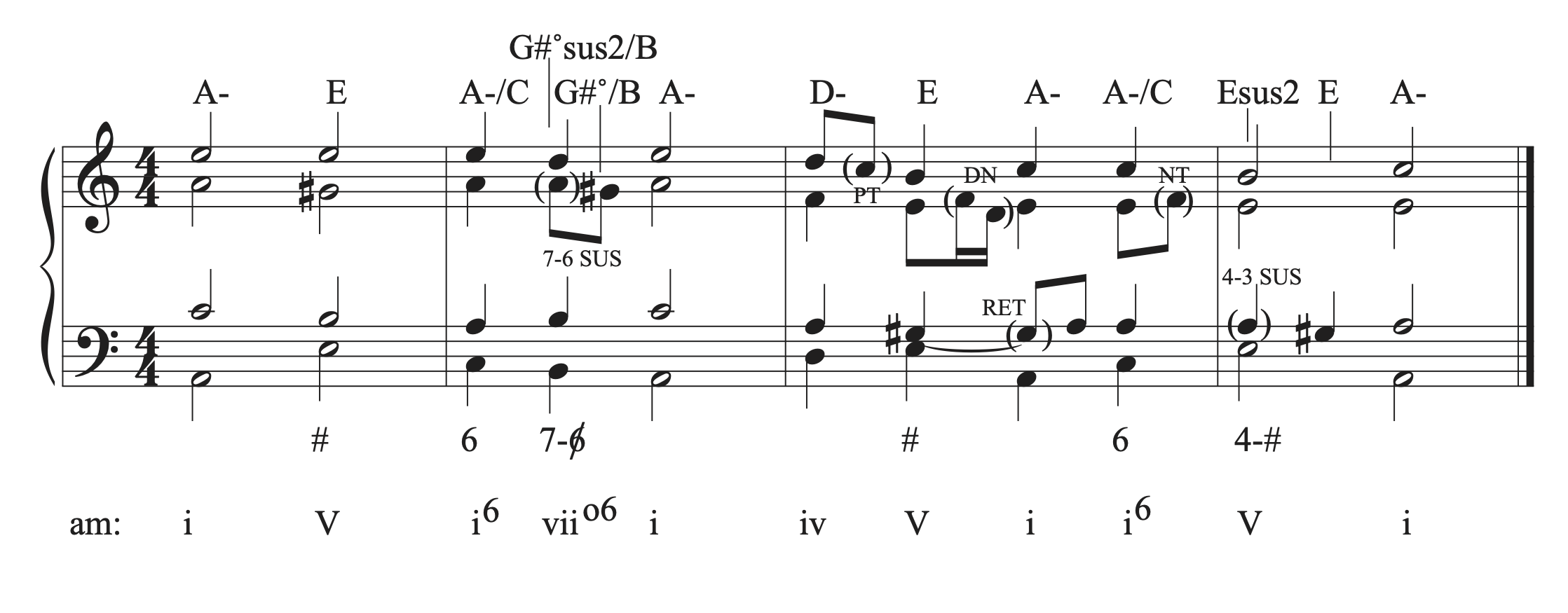
The appoggiatura is a NCT that moves first by leap, then resolves to a chord tone by step, most often in the opposite direction. Remember that the appoggiatura must be on a stronger beat or part of the beat than the resolution note that follows it. Otherwise, we call it an incomplete neighbor. We can add one to the alto voice in bar 1, beat 3. Label the NCT and check for errors.
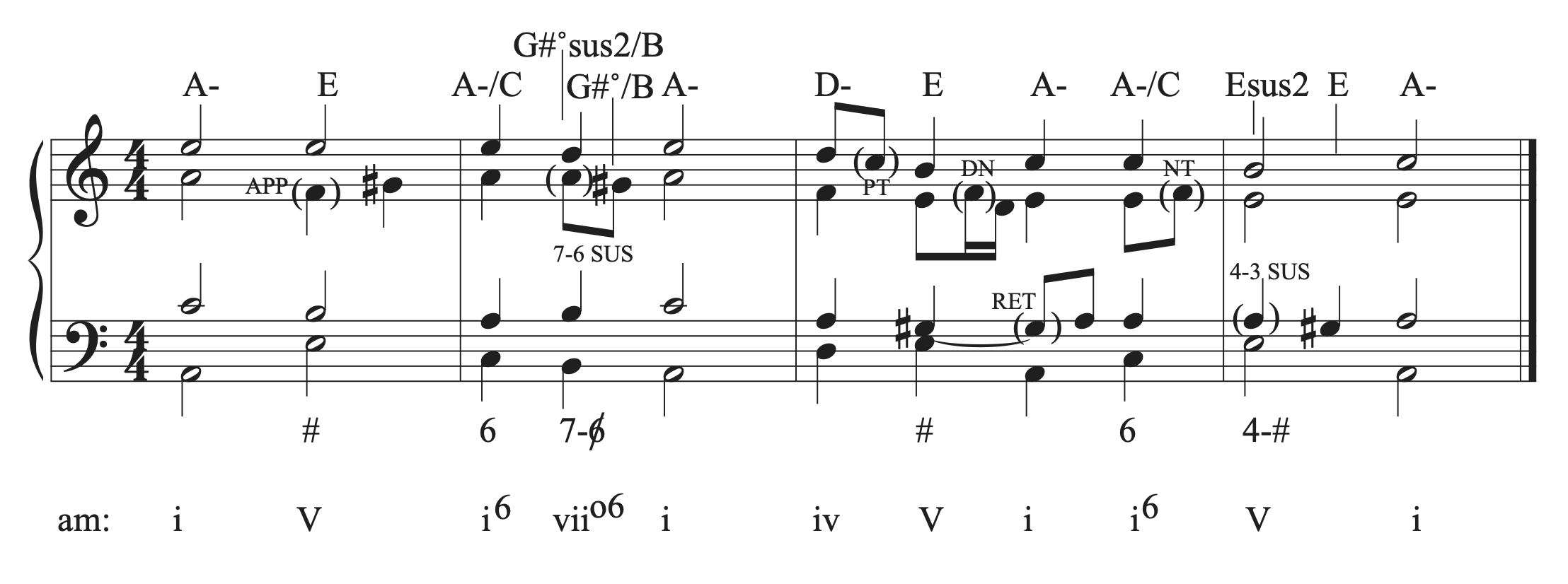
Next, let’s add an escape tone. An escape tone moves by step to the NCT, and then by leap to the next chord tone, most often in the opposite direction. We can add on beat 1 of bar 1. Label the NCT and check for errors.

The last NCT we will add to this progression is the anticipation. Anticipations are commonly found decorating the melody right before the final chord in a piece. Let’s add one to the soprano voice between beats 2 and 3 in bar 4. We already have a suspension on beat 1, that resolves on beat 2. In order to maintain clarity, we want to avoid using more than one NCT in the same space between chords. So, we need the anticipation to sound after the resolution of the suspension. We can use a dotted quarter/eighth rhythm to achieve that placement. Label the NCT and check for errors.
